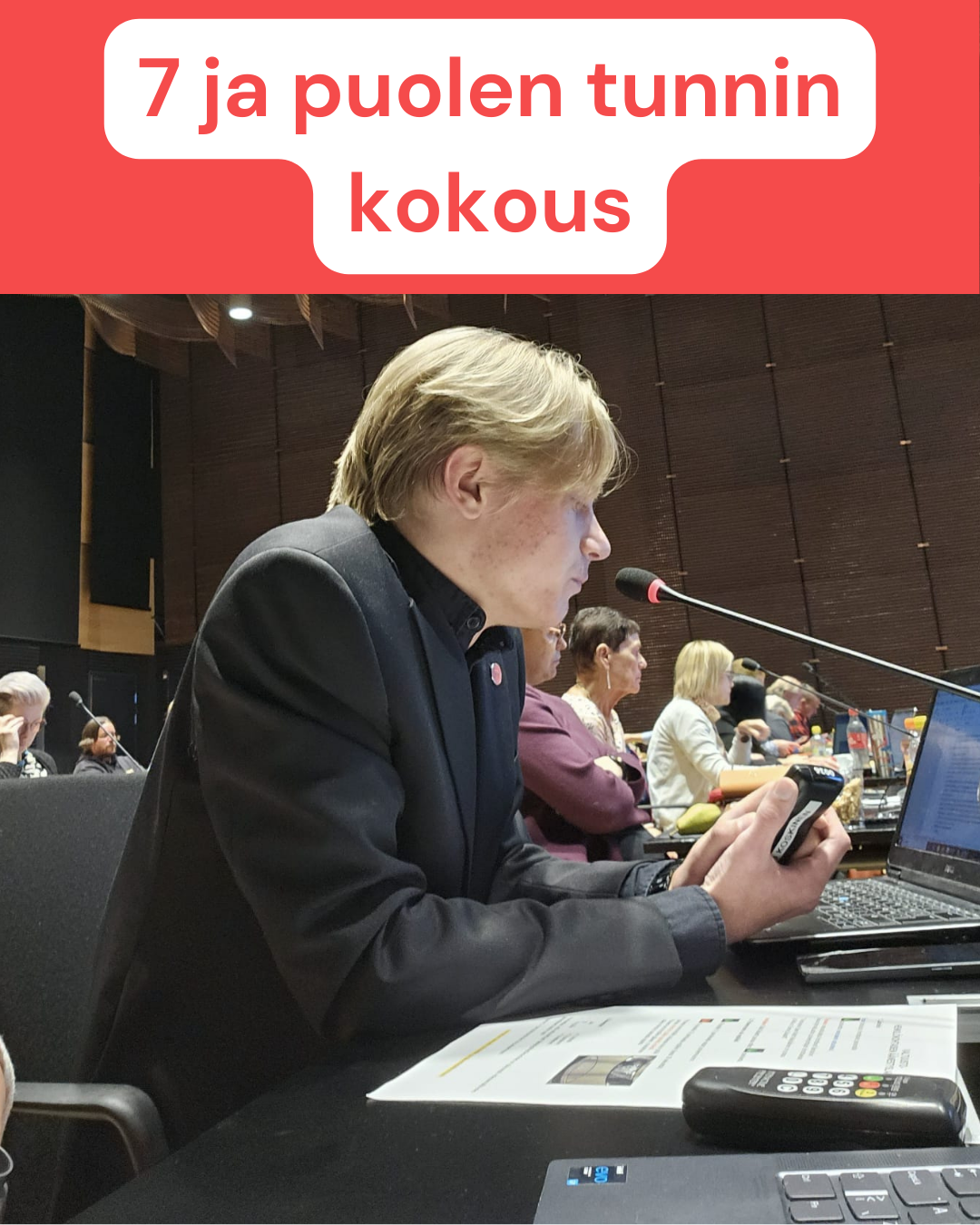7 and half our meeting

At the September meeting of the Education Committee on Wednesday, we spent most of the time discussing next year's budget and reviewing which cost-saving measures prepared by the officials should be proposed for implementation. Education services take up the largest share of the city's budget – a little over 90 million next year.
Here you can access the public agenda, which shows the proposal presented to us. The minutes will be made publicly available next week.
We did not decide on any new, financially significant additional investments in the budget proposal, since the City Board's target of balancing the budget and the city's overall financial situation left no realistic opportunities for such measures. Unfortunately, this also means that for the time being we did not propose additional resources for, for example, better implementation of the reform of learning support. However, the overall budget situation will only become clear once all committees and service areas have made their own proposals to the City Board.
Thus, no definitive negative stance can yet be stated on the matter. At least I have not been left with the impression that the general need for more helping hands is disputed. I believe the issue will be revisited later in the autumn.
On the other hand, the committee succeeded in eliminating certain undoubtedly harmful cost-saving measures.
Most importantly, we decided not to propose merging teaching groups – in other words, increasing class sizes. This is also part of the SDP's election promise both in Kaarina and nationwide.
In addition, we made various changes to the initial proposal based on political negotiations and discussions within the committee:
-
Afternoon activity fees will be raised by only €10 instead of €20. The increase is reasonable compared to the current fee level and is still below the legal maximum limits, while also bringing in necessary revenue for the service area. We proposed that the increase come into effect at the turn of the year.
-
Regarding pupil placement in comprehensive schools, I had the honor of making a proposal to ensure that parents' wishes will continue to be heard in the process. It is clear that not all wishes can be fulfilled, just as in previous years. However, considering parents' requests offers a chance to ease everyday life in terms of commuting to work, children's hobbies, and other commitments.
-
We also removed from the proposal, for the time being, the review of Kuusisto's early childhood education network, which will return to the committee for decision later this autumn.
-
Furthermore, we required that substitute coordination in early childhood education be carried out on a cost-neutral basis.
These matters will be monitored in the coming weeks, and the situation will be reassessed once the other committees have presented their proposals. After negotiations and discussions, we submitted our budget proposal unanimously without votes.
At the same meeting, the committee also approved the annual plans for early childhood education, comprehensive schools, and upper secondary schools for the 2025–26 school year. In other matters, we discussed the committee's role in contributing to the general cost-saving efforts.
A major topic of discussion, however, was updating school rules regarding restrictions on mobile phone use. In the original proposal – which later also became the decision – the guideline was that in primary school, phones are in principle banned throughout the entire school day, while in lower secondary school they may be used during outdoor recess. A stricter amendment was proposed but was voted down by the majority. The use of mobile phones, especially by lower secondary students, can be justified in many situations.
With a phone, a student can:
-
arrange plans for the rest of the day with parents, schoolmates, or friends, including transport or schedule changes. They might also ask, for instance, for permission to go to a friend's house after school.
-
check messages from teachers and other essential school-related information, for example through the Wilma system.
-
spend a pleasant moment in situations where the student has no friends or is excluded from groups, for example due to bullying. While phone use does not solve the root problem, banning it further worsens the social stigma for that student. According to research and also my own experience, being alone with a phone is more socially acceptable than standing alone doing nothing.
In addition, a total ban raises problems regarding equal sanctions, and surely no one wishes for teachers to constantly patrol every corner checking if a phone is visible. An overlooked perspective in the phone ban is also privacy, since phones are still allowed and indeed must be allowed to be used as medical devices (e.g., an insulin pump). The problem arises if a phone can be used only and exclusively as a medical device – meaning that if you are using one, you must have an illness.
There is no need to list the possible negative consequences of this situation. Even in an ideal school environment (i.e., no bullying, no discrimination, etc.), a student still has the right to keep their health information private.